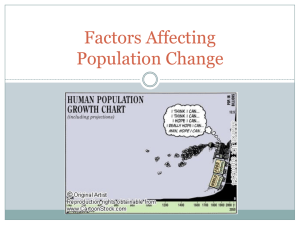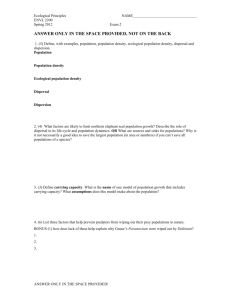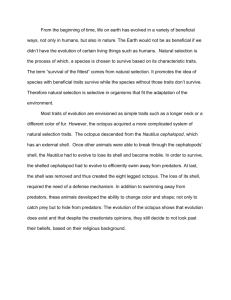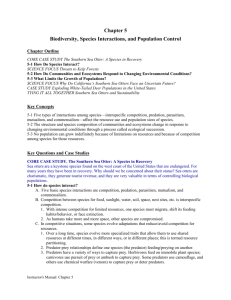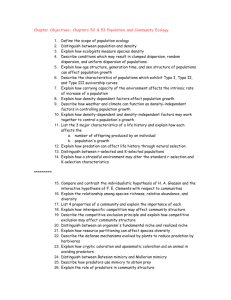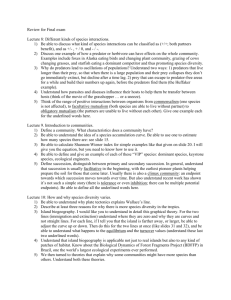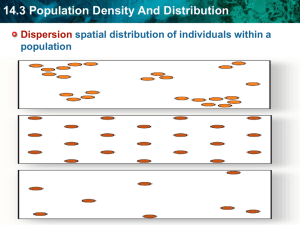here
advertisement
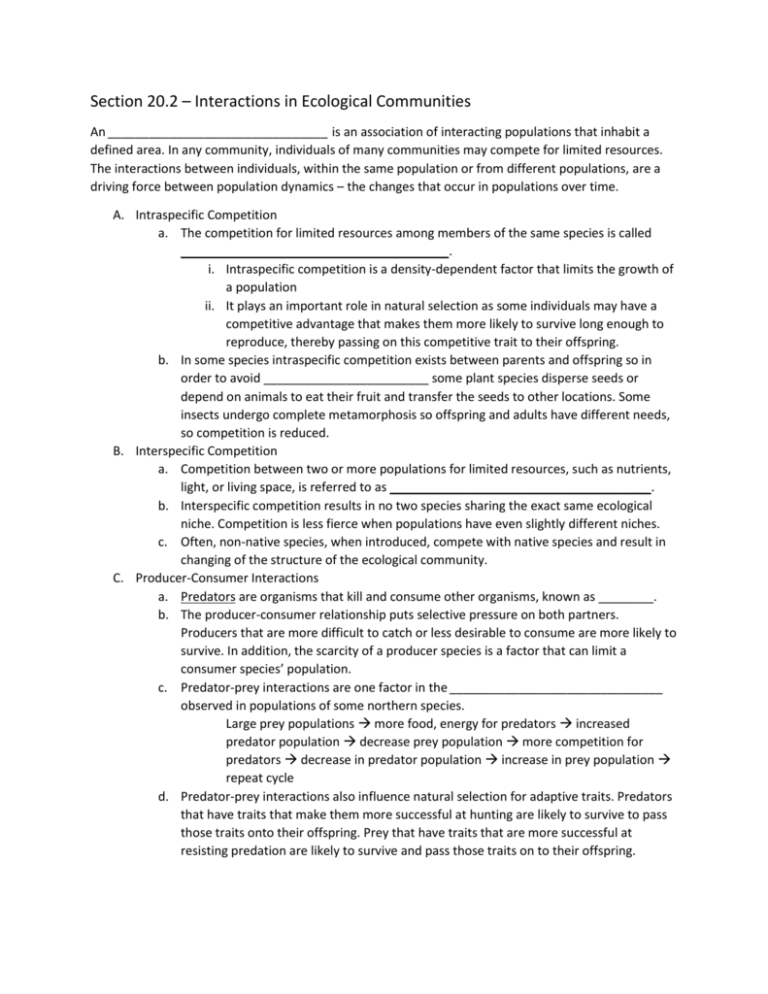
Section 20.2 – Interactions in Ecological Communities An ________________________________ is an association of interacting populations that inhabit a defined area. In any community, individuals of many communities may compete for limited resources. The interactions between individuals, within the same population or from different populations, are a driving force between population dynamics – the changes that occur in populations over time. A. Intraspecific Competition a. The competition for limited resources among members of the same species is called _______________________________________. i. Intraspecific competition is a density-dependent factor that limits the growth of a population ii. It plays an important role in natural selection as some individuals may have a competitive advantage that makes them more likely to survive long enough to reproduce, thereby passing on this competitive trait to their offspring. b. In some species intraspecific competition exists between parents and offspring so in order to avoid ________________________ some plant species disperse seeds or depend on animals to eat their fruit and transfer the seeds to other locations. Some insects undergo complete metamorphosis so offspring and adults have different needs, so competition is reduced. B. Interspecific Competition a. Competition between two or more populations for limited resources, such as nutrients, light, or living space, is referred to as ______________________________________. b. Interspecific competition results in no two species sharing the exact same ecological niche. Competition is less fierce when populations have even slightly different niches. c. Often, non-native species, when introduced, compete with native species and result in changing of the structure of the ecological community. C. Producer-Consumer Interactions a. Predators are organisms that kill and consume other organisms, known as ________. b. The producer-consumer relationship puts selective pressure on both partners. Producers that are more difficult to catch or less desirable to consume are more likely to survive. In addition, the scarcity of a producer species is a factor that can limit a consumer species’ population. c. Predator-prey interactions are one factor in the _______________________________ observed in populations of some northern species. Large prey populations more food, energy for predators increased predator population decrease prey population more competition for predators decrease in predator population increase in prey population repeat cycle d. Predator-prey interactions also influence natural selection for adaptive traits. Predators that have traits that make them more successful at hunting are likely to survive to pass those traits onto their offspring. Prey that have traits that are more successful at resisting predation are likely to survive and pass those traits on to their offspring. e. Producers and consumers typically ________________________ as a result of their interactions. Some examples of traits that producers and prey have developed (or been created with) include: i. Bitter-tasting chemicals, protective thorns, sharp quills, cryptic coloration or camouflage (___________________________________), mimicry to look like a well-defended model (known as Batesian mimicry), or mimicry of two or more species that both have undesirable traits so predators avoid both (known as Müllerian mimicry) all are possible defense mechanisms that some species employ to protect against consumers or predators. D. Symbiotic Relationships a. The direct or close relationship between individuals of different species that live together is called _________________________. Often these relationships involve an organism that lives or feeds in or on another organism which is called the host. Three forms of symbiosis are: i. Mutualism 1. When both partners in a symbiotic relationship benefit or depend on it in order to survive, their relationship is called ____________________. a. Example: Lichen is a combination of an alga and a fungus. Their mutualistic relationship allows them to grow on exposed, bare rock, where neither one would survive on its own. The algae photosynthesizes, which provides food for both organisms and the fungus produces an acid that dissolves rock, releasing minerals that are needed by the algae. ii. Commensalism 1. ____________________________ is a symbiotic relationship in which one partner benefits and the other partner neither benefits nor is harmed. a. Example: A shark does not appear to be affected from its relationship with suckerfish. Suckerfish use their sucker-like dorsal fins to hold fast to the shark’s body in order to receive protection and bits of food from the shark. iii. Parasitism 1. _____________________________ is a form of symbiosis in which one partner the parasite, benefits at the expense of its host. a. Example: Mistletoes are plants that live on trees and shrubs and do not have their own developed leaves so they obtain food by growing roots directly into the bark and phloem of conifer trees. The interaction weakens the trees and predisposes them to disease. 2. Parasites are among the most successful species in the world affecting almost all species of wild and domesticated plants and animals. They play an important role in limiting the growth of host populations, potentially helping the host population as a whole by reducing the density of the population and eliminating the weaker hosts. E. Succession: Community Change over Time a. ___________________________ is the sequence of invasion and replacement of species in an ecosystem over time. Succession is driven by abiotic factors, such as climate, and biotic factors, such as interspecific competition for changing available resources. b. ___________________________________ begins when no soil is present, such as on bare rocks left behind a retreating glacier. i. The first species to colonize an area and initiate succession form the pioneer community. The first species tend to be small and opportunistic, able to grow in harsh conditions. ii. As this first species dies, soil starts to form so that nutrient content, moisture content, and pH change to allow larger species to grow in the area. iii. Due to interspecific competition and the changing habitat, some populations are better able to survive and replace those that are unable to survive. iv. The latecomers in the process of succession form a ___________________________. c. An ______________________________________ is an event that changes the structure of a community – sometimes destroying all actively growing organisms. d. ___________________________________ is the recolonization of an area after an ecological disturbance such as a forest fire or flood. i. Soil nutrients are usually not destroyed in an ecological disturbance and often seeds and roots of vascular plants remain buried in the soil and are able to grow following a disturbance. ii. Secondary succession also includes changes in the composition and number of species over time. e. Ecological disturbances are important for many plants and animals as they provide new opportunities for species to grow. Understanding the role of ecological disturbances in structuring communities is currently an important area of investigation in ecology.
